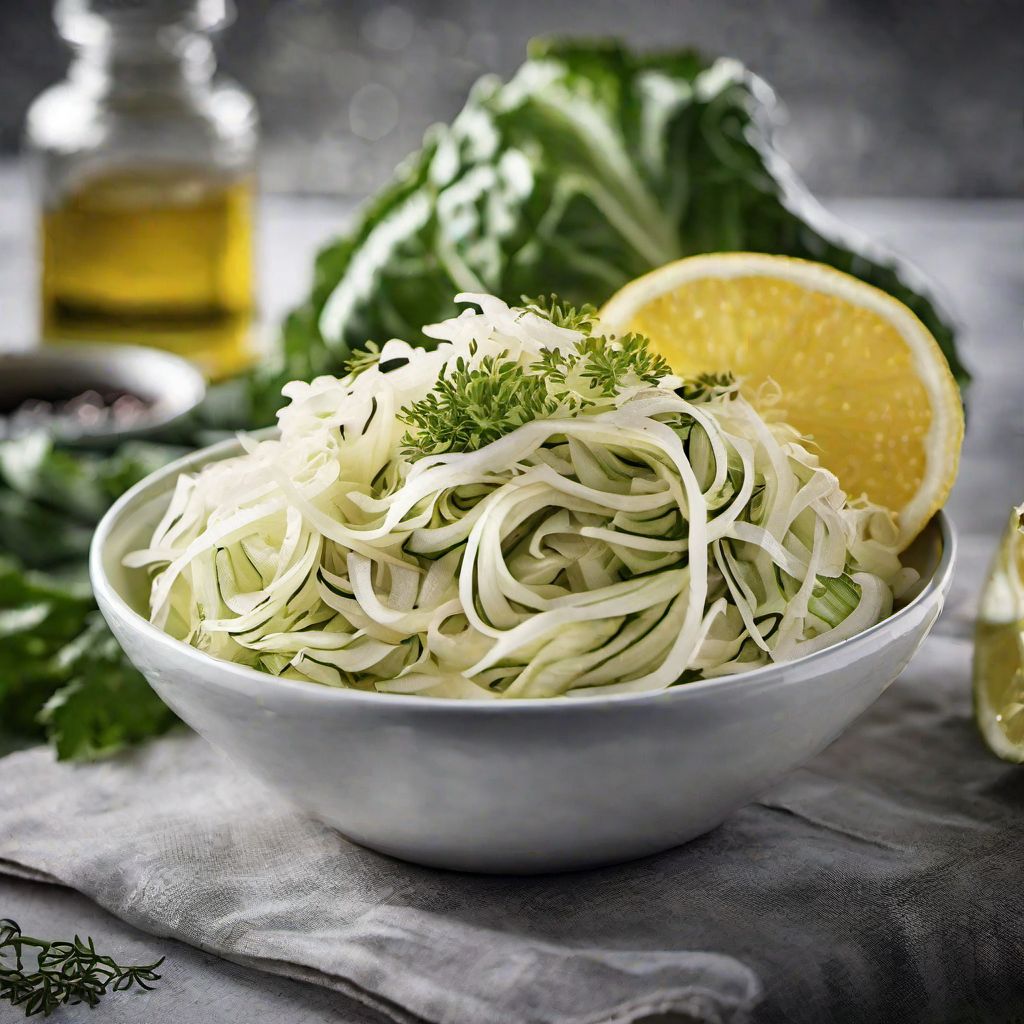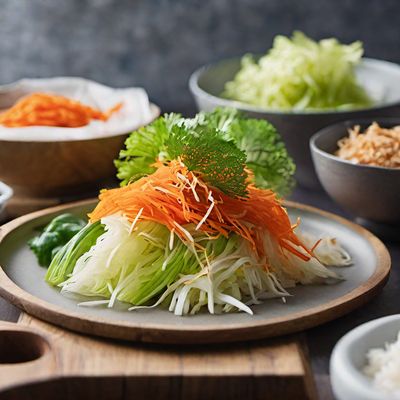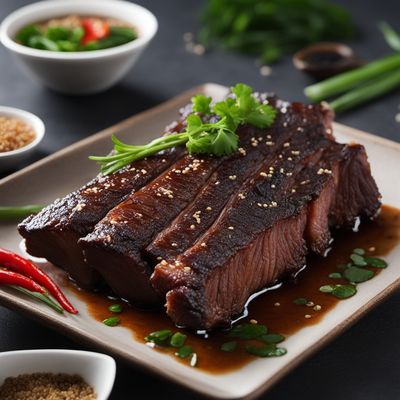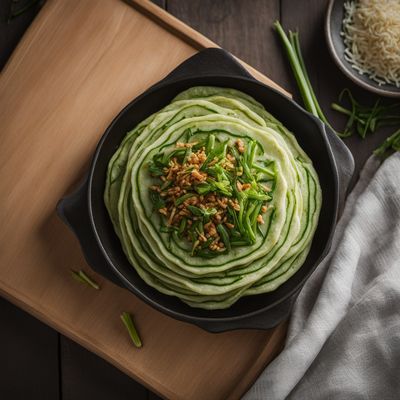
Recipe
Greek-style Kimchi
Mediterranean Twist: Greek-style Kimchi with a Tangy Twist
4.7 out of 5
In the vibrant world of Greek cuisine, we introduce a delightful twist to the traditional Korean dish, Kimchi. This Greek-style Kimchi combines the bold flavors of Greece with the fermentation technique of Korea, resulting in a tangy and refreshing condiment that will add a burst of flavor to any meal.
Metadata
Preparation time
20 minutes
Cooking time
N/A (fermentation process)
Total time
2-3 days (including fermentation and chilling time)
Yields
4 servings
Preparation difficulty
Easy
Suitable for
Vegetarian, Gluten-free, Mediterranean diet, Plant-based, Low-carb
Allergens
Dairy (Greek yogurt)
Not suitable for
Vegan (due to the use of Greek yogurt), Dairy-free
Ingredients
While the original Korean Kimchi is known for its spicy and pungent flavors, the Greek-style Kimchi takes a milder approach. It incorporates Greek ingredients and flavors such as olives, lemon, and oregano, giving it a unique Mediterranean twist. The fermentation process remains the same, allowing the flavors to develop and create a harmonious blend. We alse have the original recipe for Kimchi, so you can check it out.
-
1 medium head of cabbage, shredded (about 8 cups / 1.9 liters) 1 medium head of cabbage, shredded (about 8 cups / 1.9 liters)
-
1 tablespoon sea salt 1 tablespoon sea salt
-
1 cup (235 ml) Greek yogurt 1 cup (235 ml) Greek yogurt
-
1/4 cup (60 ml) lemon juice 1/4 cup (60 ml) lemon juice
-
1/4 cup (60 ml) extra virgin olive oil 1/4 cup (60 ml) extra virgin olive oil
-
1/4 cup (60 ml) red wine vinegar 1/4 cup (60 ml) red wine vinegar
-
1/4 cup (60 ml) Kalamata olives, pitted and chopped 1/4 cup (60 ml) Kalamata olives, pitted and chopped
-
2 cloves garlic, minced 2 cloves garlic, minced
-
1 tablespoon dried oregano 1 tablespoon dried oregano
-
1 teaspoon honey 1 teaspoon honey
-
1/2 teaspoon black pepper 1/2 teaspoon black pepper
Nutrition
- Calories (kcal / KJ): 120 kcal / 502 KJ
- Fat: 8g (1g saturated)
- Carbohydrates: 10g (5g sugars)
- Protein: 3g
- Fiber: 4g
- Salt: 1.5g
Preparation
-
1.Place the shredded cabbage in a large bowl and sprinkle with sea salt. Massage the salt into the cabbage for about 5 minutes to help release its juices.
-
2.In a separate bowl, whisk together the Greek yogurt, lemon juice, olive oil, red wine vinegar, olives, garlic, oregano, honey, and black pepper.
-
3.Pour the yogurt mixture over the cabbage and toss until well coated.
-
4.Transfer the mixture to a clean, sterilized jar, pressing it down firmly to remove any air bubbles.
-
5.Cover the jar loosely with a lid or a cloth and let it sit at room temperature for 2-3 days to ferment.
-
6.After the fermentation period, transfer the jar to the refrigerator and let it chill for at least 1 week before consuming.
-
7.Serve the Greek-style Kimchi as a side dish or condiment to complement your favorite Greek dishes.
Treat your ingredients with care...
- Cabbage — Ensure the cabbage is thoroughly washed and dried before shredding to remove any dirt or impurities.
- Greek yogurt — Opt for a full-fat Greek yogurt for a creamier texture and richer flavor.
- Lemon juice — Freshly squeezed lemon juice is recommended for the best flavor.
- Kalamata olives — Use high-quality Kalamata olives for their distinct flavor and briny taste.
- Oregano — Crush the dried oregano between your palms before adding it to the mixture to release its aroma.
Tips & Tricks
- For a spicier version, add a pinch of crushed red pepper flakes to the mixture.
- Adjust the fermentation time according to your taste preference. Longer fermentation will result in a tangier flavor.
- Store the Greek-style Kimchi in the refrigerator for up to 1 month for optimal freshness.
- Serve the Kimchi with grilled meats, roasted vegetables, or as a topping for Greek salads.
- Experiment with different Greek herbs such as thyme or rosemary to add additional layers of flavor.
Serving advice
Serve the Greek-style Kimchi chilled as a side dish alongside traditional Greek dishes like moussaka, souvlaki, or spanakopita. It can also be enjoyed as a topping for gyros or as a flavorful addition to a mezze platter.
Presentation advice
Present the Greek-style Kimchi in a small bowl or on a plate garnished with fresh oregano leaves and a drizzle of extra virgin olive oil. The vibrant colors and tangy aroma will entice your guests.
More recipes...
For Kimchi » Browse all
For Korean cuisine » Browse all
More Korean cuisine dishes » Browse all

Oiseon
Stuffed Cucumber
Oiseon is a Korean dish made with thinly sliced beef and vegetables.

Bulgogi
Bulgogi is a Korean dish that is made with marinated beef that is grilled or stir-fried. It is a popular dish in Korea and is enjoyed by many...

Sangchu ssam
Sangchu ssam is a Korean dish that is made with lettuce leaves and a variety of fillings. It is a healthy and refreshing dish that is perfect for...
More Greek cuisine dishes » Browse all

Karydopsomo
Karydopsomo is a Greek bread that is flavored with walnuts. It is a popular bread in Greece and is often served with cheese or olives.

Tirokroketes
Cheese Croquettes
Tirokroketes are a traditional Greek dish that is crispy and flavorful. They are made with cheese and herbs, making them a perfect appetizer or snack.

Gyros
Gyros is a popular Greek dish made with seasoned meat that is cooked on a vertical rotisserie and then sliced thinly. It is typically served in a...











